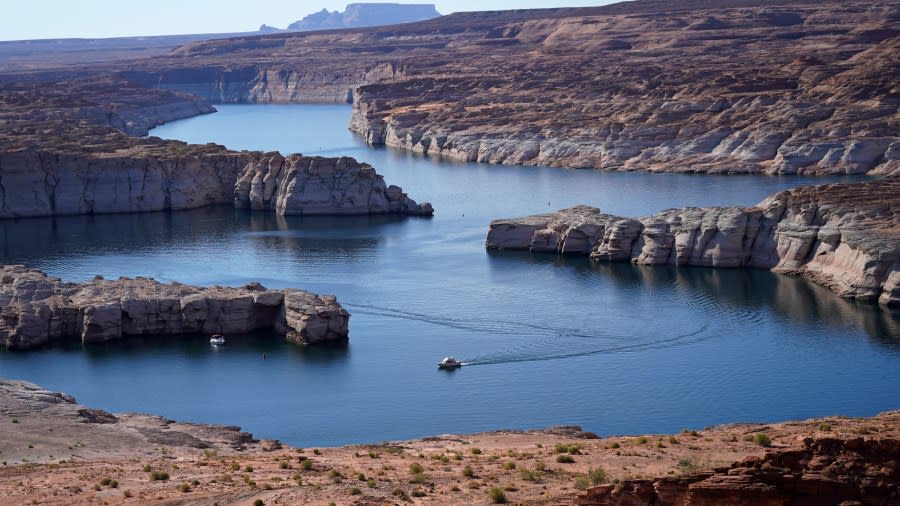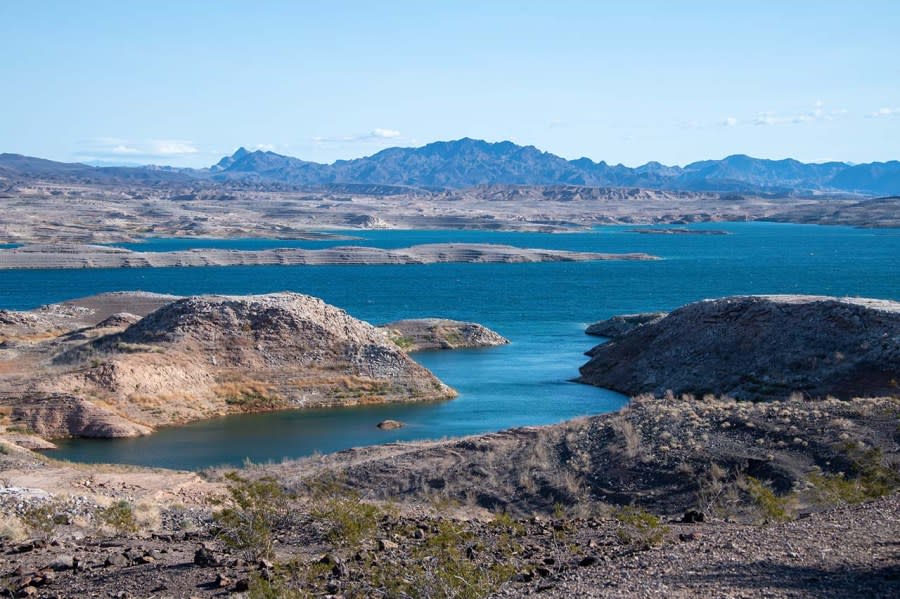Lake Mead dropping to new low in 2025, projections show

LAS VEGAS (KLAS) — A month ago, predictions for Lake Mead’s future were reassuring. Now, the federal government is forecasting the lake will drop to a new low in less than two years.
A “most probable” report released Wednesday by the U.S. Bureau of Reclamation predicts the lake will be down to 1,040.77 feet in September 2025. That’s nearly a foot lower than Lake Mead was on July 27, 2022 — and the lowest the lake has been since it was filled in the 1930s.
It’s a difference of about 20 feet. Last month, Lake Mead was expected to get to 1,060.23 feet in September 2025. Now that number is 1,040.77 feet.
Time for doom and gloom? Maybe not.
It appears that Reclamation plans to hold that water in Lake Powell instead. Despite some suggestions that the government should pull the plug on Glen Canyon Dam and just keep the water in Lake Mead, it looks like the opposite is happening.

The Lake Powell priority
Lake Powell reached its record low in April 2023 (just below 3,520 feet). And then the runoff began from record snowpack in the Upper Colorado River Basin. The 24-Month Study now shows Lake Powell climbing from its current 3,572.23-foot level to 3,582.71 in September 2024, and shooting all the way up to 3,598.27 in September 2025.
The reason for the higher levels at Lake Powell isn’t explained in the report. Last year, concerns over power production at Glen Canyon Dam grew as the lake neared the point where penstocks — water intakes for turbines — were nearer and nearer to the lake’s surface. Reclamation warned that infrastructure could be damaged if the water level went too low. Emergency decisions were made to hold back water from Lake Mead and increase releases from dams upstream from Lake Powell.
It could be that the federal government doesn’t want a repeat of that anytime soon.

The 24-Month Study is updated every month as conditions change. It’s an important part of decisions on how Reclamation manages the dams that control the flow of the Colorado River.
Near the end of October, Deputy Secretary of the Interior Tommy Beaudreau said the wet winter and conservation commitments from Nevada, Arizona and California would provide a stable footing for water supplies “for the next few years.”
Federal funding for water projects has increased dramatically under the Biden administration, but Reclamation is only in the early stages of crafting a plan that will take effect in 2027 to set new rules for managing the river.
When Lake Mead was declining fast last year, states were pointing to their conservation efforts already in place. Entitlements to shares of the river add up to more water than what actually flows down the Colorado each year — a fact acknowledged by Reclamation Director Camille Calimlim Touton.
Lake Mead now
Today, Lake Mead is at 1,064.70 feet — 34% full.

The wet winter allowed Reclamation to rebuild levels at Lake Mead, the largest reservoir in the U.S., and also at Lake Powell, the second-largest. Lake Powell is currently 37% full.
Lake Mead’s rise levels off after 5-month climb — 34% full as an incredible water year nears its end
And it wasn’t just the snowfall that changed the picture over the past year. Colder winter temperatures kept the snowpack in place in the mountains, creating a steadier flow of water down the river beginning in the spring and avoiding damaging floods along the way. Wet conditions in California reduced demand from the state that uses the most Colorado River water.
The winter took some pressure off politically charged negotiations over the river’s future. But climate change isn’t going away, conservationists warn.
For the latest news, weather, sports, and streaming video, head to KLAS.

